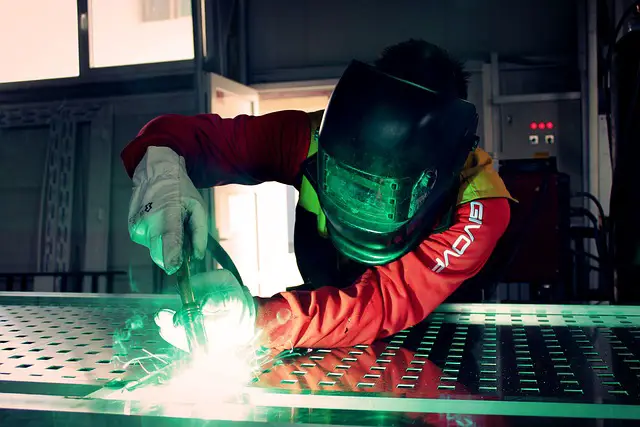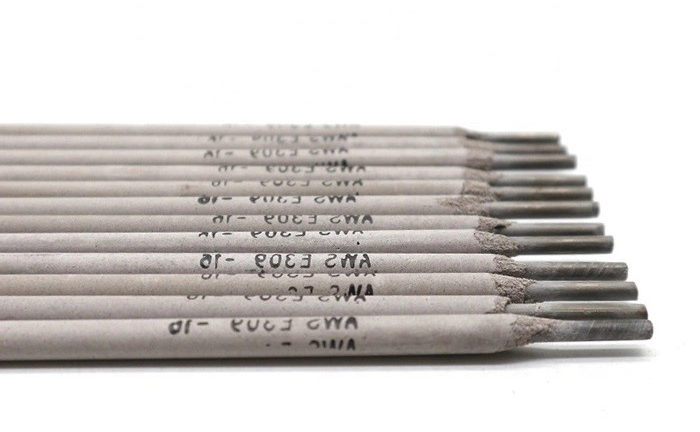If you’ve ever seen someone welding at work or on TV, chances are they were most likely using 309 stainless steel electrode rods – one of the top choices among welders for sheet metal joints. In this post, we’ll break down what makes this particular rod so popular and explore its uses in more detail, including some important safety considerations to note while working with it.
What Is 309L Welding Rod?
309 welding rod is an all-position electrode popularly used for different types of metal like mild steel, stainless steel, and many more. It is mainly designed for welding steel and can join steel that’s different from one another because of its high ferrite content.
The 309 welding rod is also famous because of its high silicon content and low carbon content. Its low carbon content reduces the risk of intergranular corrosion cracking. On the other hand, the high silicon content helps to act as a deoxidizer and effectively removes weld impurities while increasing the weld puddle fluidity.
The 309 welding rod has various thickness sizes, from 2.0mm to 4.0mm. When it comes to the settings, the thickness of the rod usually matters. For example, the thinnest 2.0mm rod will need a 24-30 input volt. The same goes for the amperage setting of the rod; it is also dependent on the thickness of the rod.
Some properties set the 309L welding rod apart from other types of rods. They only work when used on similar base metals and with both AC and DC currents regarding rod polarity. Additionally, you can use the 309L welding rod in all positions.
Can You Use 309 to Weld Stainless to Stainless?
One of the primary uses of the 309 welding rod is welding stainless to stainless. 309 has a high amount of chromium, making it great for welding stainless to stainless steel. When you use 309 to weld stainless to stainless, the result would be a sturdy, ductile weld that can effectively hold up heating and cooling cycles. In addition to the cooling and heating cycles, the weld from stainless to stainless is corrosion-resistant.
What Is the Difference Between 308 and 309 Welding Rod?
There are many differences between the 308 and the 309 welding rods. The main difference is the high ferrite percentage between the two welding rods. The 309 welding rod always has a higher ferrite percentage than the 308. Ferrite is essential to counteract solidification cracking and hot cracking. A 309 welding rod can have an FN of approximately 12-18 FN, while the 308 welding rod usually has an FN of roughly 4-9 FN.
Additionally, both welding rods have a tensile requirement of 80ksi minimum. However, the 309 welding rod is often recommended for welding stainless and dissimilar metals. The 308 is also not recommended for food-grade stainless, unlike the 309, which can weld carbon steel to stainless steel.
Can You Weld Cast Iron with 309?
Welding cast iron usually takes place for repair jobs during operations or repairs of post-production when defects are discovered. It is a common term for ferrous alloys containing more than 1-3 silicon and 2% carbon content. Cast iron usually contains more carbon than steel. Therefore, you might wonder if 309 Rod is the best option for welding cast iron.
The answer to that question is no. Cast iron alloys usually have other elements added to achieve the desired strength, hardenability, hardness, and corrosion resistance. These elements could be copper, chromium, or molybdenum. 309 welding rod is designed for welding steel and is not the best option for other metals. You’ll be more successful using nickel alloy electrodes. The nickel alloy will also help eliminate contamination common when welding cast irons.

Can You Weld Stainless with 309?
Yes, you can. The best rod for welding stainless is the 309. It has a high amount of chromium and nickel to deal with the dilution problem that might arise during welding. The 309 rod also provides the stainless with a solid hot cracking resistance due to its ferrite content.
Can You Weld Mild Steel with 309L?
When choosing a welding rod for your mild steel, it’s best to consider a high-quality option that prevents hot cracking. The best choice is the 309 welding rod. This is because its nickel and chromium content prevents cracking during welding. It is still the ideal option even when the stainless base material is 308, 316, or 304.
The 309 welding rod is also a great option because it is robust and corrosive. It is also temperature resistant and will result in gorgeous beads during the welding process. The L in the 309L welding rod refers to the alloy composition that includes a high amount of carbon. This carbon increases the corrosion resistance of this rod.
How Do You Weld with a 309 Rod?
Welding with this rod is simple and follows the same process regardless of the steel you’re welding. To weld using the 309 welding rod, follow the steps below.
- To get started, check the external appearance of the metal. You can perform a spark test to identify the metal. Doing this requires grinding the metals and observing their sparks. If it is stainless steel metal, it will generate yellow sparks.
- Afterward, gather all the welding personal protective equipment you need, like a helmet, safety glasses, ear plugs, face shield, welding gloves, leather boots, and fire-resistant clothes. It’s important never to pick synthetic clothes when you’re welding.
- Now, clean the parts you want to weld and ensure they’re free of oil, moisture, grease, or rust.
- Next, pick your 309L welding rod, set the proper amperage for the welding process, and start welding at the proper working angle.
- After carrying out full welding with the 309L welding rod, grind any uneven bead if required.
Conclusion
Welding can be difficult, especially when it comes to different welding metals. You have to consider the various metal properties and the corrosion risk. However, the 309 welding rod is the perfect tool for most welding needs. It is popular because of its versatility. However, it isn’t the most straightforward rod to use, and many people find it frustrating. Regardless of its difficulties, it can come in handy when melding steel and dissimilar metal. It’s also the best option for your mild steel.


Add comment